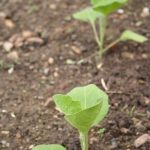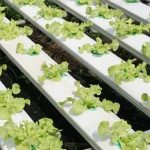Are you interested in starting a vegetable garden but limited by space? Look no further than vegetable gardening in planters. This method is perfect for those with small spaces such as balconies, patios, or limited backyard areas. By utilizing planters, you can still enjoy the benefits of growing your own fresh produce right at home.
One of the key advantages of growing vegetables in planters is the convenience it offers. With planters, you have easy access to your plants for watering, pruning, and harvesting without the need to bend down or kneel on the ground. Additionally, planters can be placed strategically to maximize sunlight exposure and provide better control over soil quality and drainage – factors crucial for successful vegetable gardening.
In this article, we will explore the various benefits of container gardening for vegetables, including accessibility and control. We will also discuss important considerations when choosing planters for your garden, selecting suitable vegetables for containers, providing proper soil and fertilizer, maintaining optimal water and sunlight conditions, dealing with pests and diseases, and ultimately enjoying a bountiful harvest from your planted crops.
Whether you’re a beginner or seasoned gardener, vegetable gardening in planters is a rewarding and practical option for cultivating fresh produce in small spaces.
Benefits of Growing Vegetables in Planters
Growing vegetables in planters offers a multitude of benefits that make it an attractive option for gardening enthusiasts, especially those with limited space. Here are some key advantages of vegetable gardening in planters:
- Convenience: Planters allow you to create a garden virtually anywhere, whether you have a small balcony, patio, or even a windowsill. This makes it easier for individuals living in apartments or urban areas to grow their own fresh produce.
- Accessibility: With vegetables planted in containers, you can easily move them around to optimize sunlight exposure or protect them from inclement weather. This flexibility ensures that your plants receive the ideal growing conditions for optimal health and productivity.
- Control: Container gardening gives you greater control over the soil quality, drainage, and overall environment of your plants. You can tailor the planting mix to suit specific vegetable varieties and adjust watering and fertilizing schedules as needed.
By harnessing the benefits of convenience, accessibility, and control that vegetable gardening in planters provides, you can enjoy a bountiful harvest of fresh, homegrown produce right at your fingertips. Whether you’re a beginner looking to dip your toes into gardening or an experienced enthusiast seeking innovative ways to maximize space utilization, planting vegetables in containers offers endless possibilities for cultivating a thriving garden.
Start your journey into the world of container gardening today and experience the joys of growing your own nutritious vegetables in a compact and manageable setting.
Choosing the Right Planters for Your Vegetable Garden
When it comes to starting a vegetable garden in planters, choosing the right containers is essential for the success of your plants. Here are some factors to consider when selecting planters for your vegetable garden:
- Size: The size of the planter is crucial as it determines how much space your vegetables have to grow. Make sure that the planter provides enough room for the roots to spread out without overcrowding.
- Drainage: Proper drainage is key to prevent waterlogged soil, which can lead to root rot. Look for planters with drainage holes at the bottom or make sure you can easily drill holes if needed.
- Material: Planters come in a variety of materials such as plastic, ceramic, wood, or metal. Each material has its pros and cons in terms of durability, insulation, and aesthetics.
Another important factor to consider when choosing planters for your vegetable garden is mobility. If you have limited sunlight in your yard, being able to move your planters around to follow the sun’s path can be beneficial for optimal growth.
Additionally, consider the overall aesthetic appeal of the planters. Choose containers that complement your outdoor space and blend well with the surroundings. Remember that a well-designed vegetable garden in planters can be both functional and visually pleasing. By carefully considering these factors, you can set yourself up for a successful and enjoyable vegetable gardening experience in planters.
Selecting the Best Vegetables for Container Gardening
When it comes to vegetable gardening in planters, choosing the right vegetables to grow is essential for a successful and satisfying experience, especially for beginners. Thankfully, there are several easy-to-grow options that thrive in container gardens, making them ideal choices for those new to this method of gardening. Some popular vegetables that are well-suited for growing in planters include tomatoes, peppers, lettuce, radishes, green beans, and herbs like basil and cilantro.
Tomatoes are one of the most popular choices for container gardening due to their versatility and abundant produce. From cherry tomatoes to beefsteak varieties, there are options available for every preference. Peppers, both sweet and spicy varieties, also do well in planters and can add a pop of color to your garden.
Lettuce is another great vegetable for beginners as it grows quickly and doesn’t require much space. Radishes are fast growers that can be harvested within weeks of planting, making them a rewarding choice for new gardeners.
In addition to these vegetables, green beans are a fantastic option for container gardening as they climb easily with trellising support. Herbs like basil and cilantro not only enhance the flavor of your dishes but also thrive in containers with proper care. By choosing these easy-to-grow vegetables for your planters, you can enjoy a bountiful harvest while gaining valuable experience in vegetable gardening.
Soil and Fertilizer Tips for Successful Planting in Containers
When it comes to vegetable gardening in planters, one of the most crucial aspects to consider is the soil and fertilizer you use. Unlike traditional in-ground gardening, planters have limited space and nutrients, so it’s essential to ensure that your plants have access to all the necessary elements for healthy growth. The right combination of soil and fertilizer can make a significant difference in the success of your container garden.
One important tip for successful planting in containers is to use high-quality potting mix specifically designed for container gardening. These mixes are lightweight, well-draining, and typically contain added ingredients such as perlite or vermiculite to improve aeration and water retention. Avoid using regular garden soil, as it tends to compact in containers, reducing airflow and water drainage essential for healthy root development.
In addition to using a quality potting mix, incorporating organic matter into your soil can provide essential nutrients for your vegetable plants. Compost or well-rotted manure can help enrich the soil with vital nutrients like nitrogen, phosphorus, and potassium. Consider mixing compost into your potting mix before planting or adding a layer of compost on top of the soil surface periodically throughout the growing season to replenish nutrients as they are utilized by the plants.
| Soil & Fertilizer Tip | Benefit |
|---|---|
| Use high-quality potting mix | Improves aeration and water drainage |
| Incorporate organic matter (compost) | Enriches soil with essential nutrients |
Watering and Sunlight Requirements for Vegetable Plants in Planters
Watering Guidelines for Vegetable Plants in Planters
Proper watering is crucial for the success of vegetable gardening in planters. One of the most common mistakes that gardeners make is either underwatering or overwatering their plants. To maintain optimal growing conditions, it is essential to water your vegetable plants regularly but not excessively.
The frequency of watering will depend on various factors such as the type of vegetables, the size of the planter, and environmental conditions. As a general rule, check the moisture level of the soil by inserting your finger about an inch deep; if it feels dry, then it’s time to water.
Sunlight Requirements for Vegetable Plants in Planters
Another key factor for successful vegetable gardening in planters is providing adequate sunlight to your plants. Most vegetables require at least 6-8 hours of direct sunlight daily to thrive and produce a bountiful harvest. When selecting a location for your planters, choose a spot that receives ample sunlight throughout the day.
If you have limited options for sunny areas, consider using caster wheels on your planters so you can move them around to capture the best light exposure. Inadequate sunlight can result in stunted growth, poor fruit development, and susceptibility to diseases.
Tips for Maintaining Optimal Growing Conditions
To ensure that your vegetable plants in planters receive adequate water and sunlight, it’s essential to monitor their growth regularly. Check the moisture level of the soil frequently and adjust your watering schedule accordingly. Rotate your planters periodically to promote even sun exposure on all sides of the plants.
During hot summer days, consider providing some shade during the hottest part of the day to prevent stress on your plants. By paying attention to these details and making adjustments as necessary, you can create an optimal environment for growing healthy and productive vegetable gardens in planters.
Dealing With Common Pests and Diseases in Container Gardening
Identifying Common Pests in Vegetable Gardening in Planters
One of the challenges that gardeners face when growing vegetables in planters is dealing with pests and diseases that can affect their plants. Some common pests that you may encounter include aphids, spider mites, whiteflies, and caterpillars. These insects can wreak havoc on your vegetable plants, causing damage to leaves, stems, and fruits. It is essential to regularly inspect your plants for any signs of pest infestations so that you can take action promptly.
Preventative Measures to Protect Your Plants
To prevent pests from attacking your vegetable plants in planters, there are several steps you can take. Firstly, practice good hygiene by keeping your planters clean and free of debris where pests can hide. Additionally, consider using natural remedies such as neem oil or insecticidal soap to deter pests without harming beneficial insects like bees and ladybugs. Another effective method is companion planting, where you grow certain plants together that repel pests naturally.
Treatment Options for Common Diseases
In addition to pests, vegetable plants in planters are also susceptible to various diseases such as powdery mildew, blight, and root rot. If you notice any symptoms of disease on your plants, such as yellowing leaves or moldy spots, it is crucial to act quickly to prevent further spread. Remove any infected plant parts immediately and dispose of them properly to avoid contamination. Consider using organic fungicides or bactericides to treat the disease effectively while minimizing harm to the environment.
By being proactive in identifying potential pest issues and taking preventative measures against diseases, you can ensure the health and productivity of your vegetable garden in planters. Remember that a little extra care and attention can go a long way in protecting your plants from harm and maximizing your harvest at the end of the season.
Harvesting and Caring for Vegetables Grown in Planters
Once your vegetables have reached maturity, it is time to harvest them from your planters. Different vegetables have specific signs that indicate they are ready for harvesting, such as changes in color, size, or texture. For example, tomatoes should be picked when they are fully red and firm, while lettuce leaves can be harvested when they reach a desirable size. It is essential to follow these indications to ensure the best taste and quality of your homegrown produce.
After harvesting your vegetables, proper care and maintenance are crucial to keep your plants healthy and productive. Regularly check the condition of the soil in your planters to ensure that it remains nutrient-rich and well-draining. Consider refreshing the soil every growing season to replenish nutrients that may have been depleted by previous crops.
Additionally, prune any dead or damaged foliage to promote airflow and prevent disease spread among your plants. Taking these steps will help prolong the lifespan of your vegetable plants and encourage continuous growth.
In addition to caring for your plants post-harvest, proper storage of harvested vegetables is essential to maintain their freshness and flavor. Some vegetables can be stored at room temperature, while others require refrigeration to prolong their shelf life. Research the specific storage requirements of each vegetable you grow to maximize its longevity after harvest. By taking these measures, you can fully enjoy the rewards of your efforts in vegetable gardening in planters all season long.
| Harvesting Tips | Caring Tips |
|---|---|
| Follow specific signs for each vegetable | Check soil condition regularly |
| Consider refreshing soil every season | Prune dead or damaged foliage |
| Research storage requirements for each vegetable | Achieve maximum freshness post-harvest |
Creative Ideas for Designing and Arranging a Gorgeous Vegetable Garden in Planters
In conclusion, vegetable gardening in planters is a fantastic option for those with limited outdoor space or who simply want to add a touch of greenery to their surroundings. By utilizing planters, individuals can enjoy the convenience, accessibility, and control that traditional gardening may not always provide. With the right planters and careful selection of vegetables, anyone can create a thriving garden on their balcony, patio, or even indoors.
When it comes to choosing the right planters for your vegetable garden, considerations such as size, material, drainage holes, and mobility are key factors to keep in mind. By selecting the best vegetables for container gardening and ensuring nutrient-rich soil with proper fertilization techniques, you can set yourself up for success. Remember to maintain optimal growing conditions by providing adequate water and sunlight while being vigilant against pests and diseases through preventative measures and treatment options.
As you enjoy the process of growing your own vegetables in planters, don’t forget about the ultimate reward of harvesting and caring for your plants. The satisfaction of enjoying fresh produce that you have nurtured from seed to table is truly unparalleled.
Get creative with designing and arranging your vegetable garden in planters to not only maximize space but also enhance the aesthetic appeal of your living area. Embrace this opportunity to connect with nature and reap the benefits of vegetable gardening in planters.
Frequently Asked Questions
What Vegetables Are Good to Grow in Planters?
Vegetables that are good to grow in planters include tomatoes, peppers, lettuce, spinach, herbs like basil and mint, and root vegetables such as radishes and carrots. These plants thrive in the confined space of a planter and can be easily managed.
What Vegetables Can Be Planted Together in Pots?
When planting vegetables together in pots, it is important to consider their compatibility in terms of sunlight requirements, watering needs, and growth habits. Some examples of vegetables that can be planted together in pots include cherry tomatoes with basil, carrots with radishes, and lettuce with chives.
What Do You Put in the Bottom of a Vegetable Container?
To create proper drainage in a vegetable container, it is recommended to put a layer of small rocks or pebbles at the bottom before adding potting soil. This helps prevent waterlogging and root rot by allowing excess water to drain away effectively.
Additionally, adding a layer of landscape fabric on top of the rocks can further assist in maintaining good drainage while keeping the soil in place.

If you’re looking to get into vegetable gardening, or are just looking for some tips on how to make your current garden better, then you’ve come to the right place! My name is Ethel and I have been gardening for years. In this blog, I’m going to share with you some of my best tips on how to create a successful vegetable garden.





